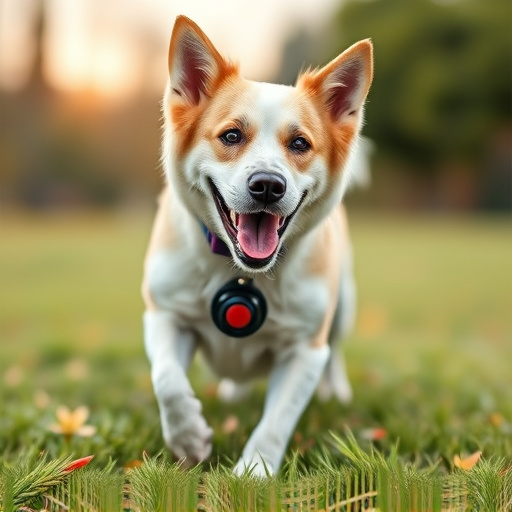Handheld sonic dog deterrents use high-frequency sound waves (inaudible to humans) to modify canine behavior effectively and humanely. Dogs learn to associate specific ultrasonic signals with unwanted actions like barking or jumping, leading to improved obedience without violence. While safe for most dogs, sensitive breeds may experience temporary distress, hence the need for consistent training alongside positive reinforcement techniques. This modern approach combines technology with traditional methods to achieve significant behavioral improvements in a non-violent manner.
“Unleash a new era in canine training with the innovative power of ultrasonic technology. This article explores the potential of this cutting-edge approach, delving into how handheld sonic deterrents can modify dog behavior effectively. We dissect the science behind these devices, revealing their precise mechanisms and safety assessments.
Furthermore, we guide readers through practical integration techniques, ensuring daily routines become learning opportunities. Discover why this technology stands out as a safe, non-violent method for training dogs, making it a game-changer in responsible pet care.”
- Understanding Ultrasonic Technology for Dog Training
- How Handheld Sonic Deterrents Work
- Evaluating the Safety and Effectiveness of Sonic Devices
- Integrating Ultrasonic Training into Dog Care Routines
Understanding Ultrasonic Technology for Dog Training
Ultrasonic technology for dog training has emerged as a fascinating and effective method to modify canine behavior, especially when it comes to addressing unwanted actions like barking or aggression. This innovative approach utilizes high-frequency sound waves that are inaudible to humans but can be detected by dogs. The handheld sonic dog deterrents emit these ultrasonic signals, which serve as positive reinforcement or warnings, depending on the device’s design and programming.
The effectiveness of this technology lies in its ability to stimulate a dog’s natural sensitivity to high-frequency sounds. When triggered, the devices produce a sound that can vary from a gentle beep to a harsh screech, prompting the dog to alter its behavior. Through consistent training, dogs learn to associate these ultrasonic signals with specific actions, ultimately modifying their reactions and promoting desired behaviors. Thus, handheld sonic deterrents offer a safe, non-violent alternative for dog trainers and owners looking to enhance their pet’s obedience.
How Handheld Sonic Deterrents Work
Handheld sonic deterrents are an innovative tool in dog training, using high-frequency sound waves to communicate with canines. These devices emit ultrasonic sounds, which are inaudible to humans but can be heard and felt by dogs. The technology is designed to disrupt a dog’s behavior without causing harm or discomfort. When a dog approaches an object or enters a specific area, the deterrent emits a high-pitched sound that acts as a signal, training the dog to associate certain environments or items with this unpleasant yet non-physical sensation.
The effectiveness of handheld sonic deterrents lies in their ability to provide positive reinforcement for desired behaviors while minimizing the use of traditional, potentially harsh methods. By targeting specific behavior patterns, trainers can guide dogs to make different choices, especially during training sessions or when facing environmental challenges. This technology is particularly useful for modifying behaviors like barking, jumping, or entering restricted areas, offering a safe and humane alternative to other deterrents.
Evaluating the Safety and Effectiveness of Sonic Devices
Evaluating the Safety and Effectiveness of Sonic Devices
When it comes to training dogs, especially for behavioral modifications, the use of handheld sonic deterrents has gained traction in recent years. These devices emit high-frequency sound waves designed to disrupt unwanted behaviors like barking or aggression without causing harm to the animal. The effectiveness of handheld sonic dog deterrents lies in their ability to startle the dog with a slight ultrasonic noise that humans typically can’t hear, reorienting it away from the target behavior.
However, assessing safety and effectiveness is crucial. While these devices are marketed as non-harmful, some studies suggest they may cause temporary distress or discomfort in dogs, particularly those sensitive to sound. Moreover, their consistency in addressing behavioral issues varies widely based on factors like dog breed, temperament, and the specific nature of the behavior. Therefore, potential users should approach sonic deterrents as one tool in a comprehensive training regimen, ensuring consistent positive reinforcement for desired behaviors alongside any sonic intervention.
Integrating Ultrasonic Training into Dog Care Routines
Integrating ultrasonic training into dog care routines offers a modern, non-violent approach to behavior modification. This technology utilises handheld sonic dog deterrents that emit high-frequency sound waves, imperceptible to humans but disruptive to dogs. By targeting specific behaviors like barking or jumping, these devices provide an instant, gentle correction without causing physical harm.
The effectiveness of handheld sonic dog deterrents lies in their ability to condition dogs to associate certain actions with an unpleasant (but safe) sensation. This positive reinforcement, combined with consistency and patience, can lead to significant improvements in a dog’s behavior. The key is to use the technology as part of a comprehensive training program, combining it with traditional methods like rewards and commands to create a balanced and effective learning environment for your furry friend.
Ultrasonic technology for dog training offers a safe and effective approach to modifying canine behavior. By understanding how these handheld sonic deterrents work, we can ensure their safe integration into dog care routines. Evaluating the effectiveness of such devices highlights their potential to curb unwanted behaviors without resorting to harsh methods. As with any training tool, responsible use and consistent application are key to achieving positive results, making handheld sonic dog deterrents a valuable addition to a comprehensive dog training regimen.
